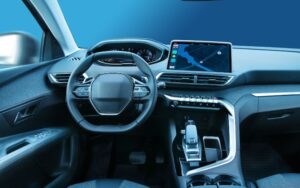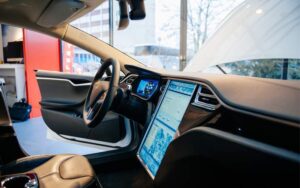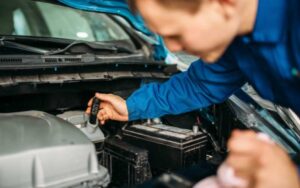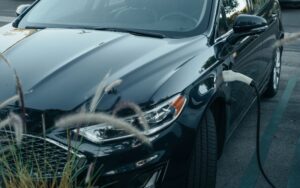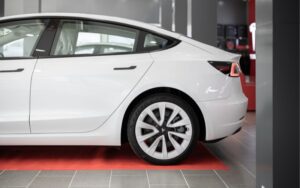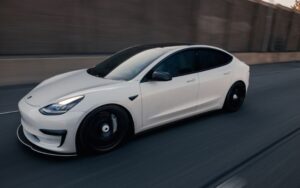10 Common Problems With Tesla Model 3!
The Tesla Model 3 was the best-selling electric vehicle (EV) for a long time. While the Tesla Model Y is now the best in its class, the Model 3 is still quite competitive.
However, a vehicle’s popularity does not guarantee that it is without flaws. The truth is that there are a handful of issues common with the Tesla Model 3.
The problems with the Tesla Model 3 are mostly minor, while others are significant and must be fixed. These problems include autopilot issues, touchpad problems, poor paint jobs, battery issues, sunroof and windscreen cracks, climate control issues, etc. Fortunately, Tesla has been able to remedy some of these problems with remote firmware upgrades, while others remain.
If you’re in the market for a new Ev, it’s reasonable to consider some common problems with each model.
So, check out our list of concerns below to see whether buying a Model 3 is worth the hassle.
Top 10 Common Problems of Tesla Model 3
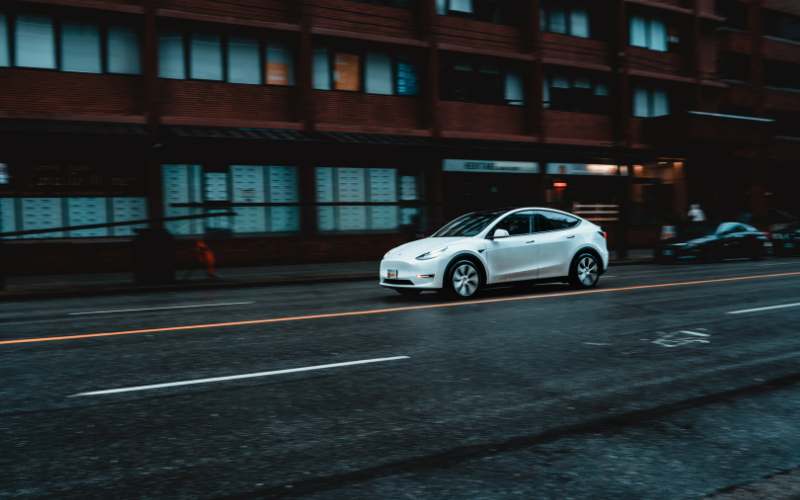
Below are a few common problems of a Tesla Model 3 highlighted by different users:
#1. Manufacturing Standards
The Model 3’s build quality is the subject of one of the most frequent complaints about the vehicle, precisely the inconsistently low quality of several construction details.
Owners of the Tesla Model 3 have reported several problems with appearance, ranging from misplaced body panels to faulty paint jobs.
Owners of the Model 3 find these construction flaws very unacceptable, especially considering the high price and widespread acclaim of the Tesla brand.
#2. Subpar Painting Jobs
Many Tesla customers have complained that their cars’ paint scratches and wears out considerably faster than it should due to Tesla’s use of low-quality paints and coatings.
Unfortunately, Tesla’s quality control has occasionally failed, resulting in vehicles being delivered with visible dings and dents.
Rust may form on Teslas that last drove a while ago due to the company’s paint issues, which occasionally occur before the vehicles are delivered.
#3. Touchscreen Controls
Tesla may have made some compromises in the safety of its drivers in an attempt to achieve a clean and futuristic look.
While the touchscreen functionality makes it easier to access frequently used functions, it also poses a risk since drivers may have to take their eyes off the road to change the speed limit.
The Model 3 greatly raises the potential for driver distraction due to the lack of a Heads-Up Display (HUD) in the dashboard in front of the steering wheel.
In addition, drivers often complain that touchscreen failure may cause various difficulties, from navigational errors to inconsistent charges.
Touchscreens have been critiqued for various problems, including overheating, accidental activation of the stereo, and lockouts, all of which drivers have reported.
#4. Space Restriction
Another extensive criticism of the Tesla Model 3 is that it only has a small amount of capacity in the trunk.
The Model 3’s storage capacity is minimal compared to other cars, much alone other EVs, with less than 20 cubic feet available in the trunk and little more than 3 cubic feet in the front.
For example, the Tesla Model S has 25 cubic feet of trunk space and a smaller frunk space of 3.1 cubic feet. Totaling less than 25 cubic feet is severely inadequate.
#5. Disturbing Background Noise
Model 3 drivers experience the loud noise inside this specific Tesla, whether traveling at high speeds along the highway or merely cruising through their neighborhood on a windy day.
No modern driver should have to put up with excessive wind noise, and shockingly, this issue was in the design of this Tesla.
The same applies to everyday traffic noise, which may be loud while speeding along a major thoroughfare.
#6. Battery Capacity
Another one of the most often voiced concerns about the Tesla Model 3 is the battery. The Tesla Model 3 has the shortest range of any Tesla car.
As a result, many owners are reluctant to travel long distances for fear of not being able to locate a suitable charging station in time.
The Model 3’s battery performance falls short of expectations, with a range of considerably under 300 miles.
This doesn’t account for any problems or disparities brought on by weather or other environmental factors.
#7. Autopilot Issues
The difficulties with autopilot must rank among Tesla owners’ most frequent problems with their cars.
Tesla’s sophisticated driver-assistance technology comes standard on the Model 3, although flaws and severely limited functionality plague it.
The fully autonomous operation of all Teslas was promised by 2016. After seven years, Autopilot still isn’t autonomous.
#8. Faulty Seal Installation
The trunk of the Tesla Model 3 has leak issues in particular. And these leaks often occur because of improperly placed trunks or faulty passenger window seals.
You should fix the seals as soon as possible since they may destroy the upholstery and cause rust to become permanent if left uncontrolled.
If your trunk liner leaks, you should take your vehicle in for a new seal or a gasket installation.
#9. Sunroof and Windscreen Cracks
Some sunroofs and windows on Model 3 vehicles have developed random cracks due to issues with the glass production process.
The thought of readily shatterable glass concerns impacts resistance and Tesla’s safety rating, even if the guarantee covers these problems.
#10. Climatic Problems
Some Model 3 drivers are discovering that their vehicles need to be up to the challenge of driving in cold and rainy conditions.
- Mechanical flaws in heat pumps: Tesla heating systems may malfunction in colder locations because of faulty release valves.
This has sometimes resulted in failed temperature control inside the vehicle and failed defrosting of the front windscreen, making it impossible for the driver to see out.
- Substandard undercarriage: The composite undercarriage of vehicles has deteriorated in water, with owners reporting damage after driving through puddles.
- The LFP and Lithium-iron battery: Some European drivers have reported a drop in range of up to 25%, linked to the lithium batteries used in imports.
Even though updates and replacement components have been released often, Tesla has only sometimes successfully fixed these issues.
What is The Life Expectancy of the Tesla Model 3?
According to Tesla, the Model 3 has an expected lifespan of over 10 years on average.
However, it is much too soon to make an educated guess about the average. You can make reasonable judgments based on well-kept and heavily used automobiles.
However, projections indicate that the Model 3 will last more than 20 years on average, around 50 percent longer than a conventional internal combustion engine vehicle.
What is the Tesla Model 3 Defect Rate?
According to the research of over 5,000 Model 3 owners in 2018, the defect rates reached their highest point in the third quarter, with 80 different problems for every 100 vehicles sold.
It was the moment when Tesla became renowned for starting a new assembly line in the parking lot of its facility, which resulted in a threefold increase in Model 3 output.
However, Tesla is now producing about 100,000 automobiles per quarter. For the first time, data suggests that volume has brought stability to the company’s production processes.
In 2022, there was a 44% decrease in the number of complaints received from new owners compared to the previous year.
A decade after assembling its first car, Tesla has transitioned from producing electric vehicles serving a niche market to becoming a high-volume manufacturer catering to the world market.
This has been an experiment to establish a new automobile that takes unconventional methods for servicing, charging, and software upgrades.
Customers who ordered the Tesla Model 3 in its initial few hundred thousand iterations were volunteering to put a novel approach to the market to the test.
For Tesla to continue its exponential growth, it must persuade mainstream auto consumers that it can give the reliability often provided by brands such as Toyota, Volkswagen, or Ford.
How Reliable is the Model 3 Tesla?
The foundations, software, and primary drivetrain components of the Model 3 are strong if you get past the rattles, paint concerns, and panel gaps.
Complaints about the build quality of Tesla vehicles have been a problem for years, which is not surprising given that it is competing with manufacturers that have at least fifty years of expertise.
Even after obtaining much experience with their earlier models, Tesla has kept everything the same with their Model 3.
Because the Model 3 is Tesla’s first car designed for the general market, the company had to endure many pains to fulfill the demand and goal of producing 500,000 vehicles.
After being on the market for several years, there have been no instances of serious malfunctions that may leave you stranded in a Model 3.
The Tesla Model 3 is an exceptionally dependable automobile even though it is packed to the gills with cutting-edge technology, all of which are potential failure spots.
Unlike high-strung supercars, you won’t have to worry about spontaneous combustion or experiencing catastrophic malfunctions while driving.
Tesla Reliability in Comparison to Other Brands
Below is a table comparing the reliability of the Tesla Model 3 to other cars.
| Rate | Model/Brand | Score |
|---|---|---|
| 1st | Lexus | 76 |
| 3rd | Toyota | 71 |
| 13th | Porsche | 52 |
| 16th | Cadillac | 47 |
| 17th | BMW | 45 |
| 23rd | Mercedes-Benz | 34 |
| 24th | Volkswagen | 31 |
| 27th | Tesla | 25 |

Hey, I’m Michael Davis, a 35-year-old with a degree and a love for cars and tech. Since I was a kid, cars have been my thing—so much that I even thought they ran on magic beans! Fast forward, and I’ve built Vehicle Army, your one-stop-shop for easy-to-understand car facts.

